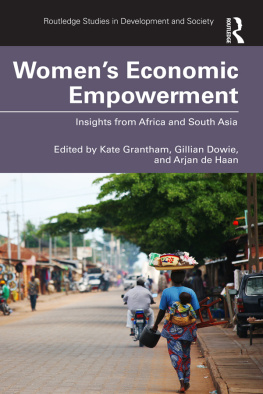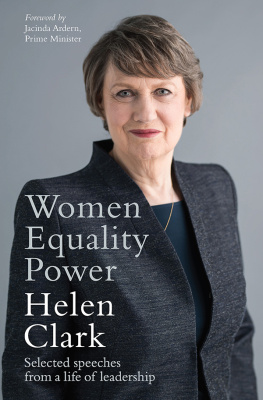First published in 1990 by
Kegan Paul International Ltd
This edition first published in 2009 by
Routledge
2 Park Square, Milton Park, Abingdon, Oxon, OX14 4RN
Simultaneously published in the USA and Canada
by Routledge
270 Madison Avenue, New York, NY 10016
Routledge is an imprint of the Taylor & Francis Group, an informa business
Munira A. Fakhro 1990
Printed and bound in Great Britain
All rights reserved. No part of this book may be reprinted or reproduced or utilised in any form or by any electronic, mechanical, or other means, now known or hereafter invented, including photocopying and recording, or in any information storage or retrieval system, without permission in writing from the publishers.
British Library Cataloguing in Publication Data
A catalogue record for this book is available from the British Library
ISBN 10: 0-7103-0337-8 (hbk)
ISBN 13: 978-0-7103-0337-0 (hbk)
Publishers Note
The publisher has gone to great lengths to ensure the quality of this reprint but points out that some imperfections in the original copies may be apparent. The publisher has made every effort to contact original copyright holders and would welcome correspondence from those they have been unable to trace.
Preface
This book grew out of a dissertation written during 198386 and is an analysis of the social policies needed to facilitate womens entry into the labour force.
It is essential now for Gulf women to move beyond their domestic activities by taking an active role and by providing leadership to ensure that they have access to the opportunities and benefits of economic development.
While the study was slowly taking shape I made a number of trips to different international agencies including the ILO in Geneva, UNESCO and the OECD in Paris. Such trips enabled me to make fruitful contacts with a number of officials and specialists who provided information on vocational training, literacy programs and the European experience with foreign labour.
The tables presented here are entirely new in the sense that data were selected from 194181 censuses. Other statistics were drawn from different sources reflecting developments during the 1980s.
Finally I would like to express my deepest appreciation to all those who helped me. I am particularly grateful to my adviser Dr Alfred Kahn of Columbia University for his valuable comments and constructive criticism.
Bahrain, June 1989
Chapter One
Introduction
Demographic Characteristics of the Population in Bahrain
According to the 1981 census, the total population of Bahrain is 350,798; the employed population 15 years old and over is estimated at 146,133. Statistics regarding women in the labor force show that only 12,176 of Bahraini females, or 8.3% of the total, are in the labour force. The number of Bahraini males in the labor force is 52,400 (35.9%), whereas the rest of the labor force (81,497 or 55.8%) is made up of foreigners. In the private sector, the proportion of foreign workers is much higher than their proportion in the public sector. In 1982, the percentage of Bahraini employees who worked in the private sector comprised 25.7%, whereas the non-Bahrainis made up 74.3% of the labor force.
The heavy reliance upon immigrant labor is related to the boom of the post-oil economic infrastructure that increased sharply after 1973. The government of Bahrain, as well as the governments of other Gulf states, responded to the manpower shortage by allowing the market forces to rule. Labor was imported with little official constraint; the result was an overflow of workers of massive proportion.1
In 1975, the number of foreign workers in Bahrain was 29,100. That number has been increasing over the years. The World Bank study (1983) predicted that with high growth rates in 1985, there would be about 81,400 foreign workers in Bahrain.2 However, the 1981 census revealed this growth projection had been realized in 1981, four years earlier than predicted. The 1981 census showed also that the foreign population as a whole, counting spouses and dependents, had grown from 37,990 in 1971 to 112,400 in 1981, an increase of 197% in only one decade. Moreover, the population is expected to reach three-quarters of a million in the year 2000 (463,357 Bahrainis and 286,733 non-Bahrainis). This rapid growth rate of foreign population from 18% in 1971 to 32% in 1981 reflects the magnitude of the problem of the rapidly increasing size of the foreign population in Bahrain as well as in the other Gulf states where foreign population exceeds 75% of the total. Crude participation rates (the percentage of the population that works) is estimated to range from 18.5% in Qatar, 19% in Kuwait to 24.9% in Oman. In Bahrain, the crude participation rate was 21.3%,3 still an alarming rate compared to the rate in some industrial countries. In France, Germany and Switzerland, for example, foreign workers formed 10.9%, 9.7% and 12.8% respectively of the economically active population of those countries in 1976; this relatively small percentage was considered a very serious problem and different measures have been taken to minimize the threat posed by the foreign workers.
The workforce in the Gulf states is even smaller than would be expected from a total population of this size. This phenomenon is related to three factors:4
1. The population of the Gulf states is very young: of Qatars small population of 68,000, over 44% are less than 15 years old. This phenomenon can be seen more clearly in Bahrain, where the Bahraini population numbers 238,420; nearly 129,760 or 54.5% are 19 years and under.
2. The widespread expansion of secondary and university education during the 1970s had held within the educational system boys and girls who otherwise would have entered the workforce at a younger age. This factor reduces the labor force significantly.
3. The third factor is that the labor force is reduced by the limited number of females, who work mostly in occupations such as teaching, nursing or secretarial jobs and in some womens organizations.
Yet, despite this limited size of an indigenous workforce, the Gulf states have embarked upon economic development and industrialization. The 1973 oil-price boom enabled the Gulf states to invest in industry and to build the infrastructure, but the major obstacle to this economic development was the shortage of manpower, which was seen by planners as the major constraint to development.
HISTORICAL BACKGROUND
Most studies of international labor migration in the Gulf States have emphasized the period since the 1973 oil price increase. However, foreign laborers were imported to the Gulf a long time ago, even prior to oil discovery.
The existence of foreign labor in Bahrain can be traced back to the discovery of oil in 1932, when there was a great demand for skilled labor. The increasing immigration of Persians had begun to cause concern in 1937. Belgrave (the British adviser to the ruler of Bahrain) requested the Bahraini Petroleum Company (BAPCO) not to employ non-Bahraini workers.5 However, the number of Persians employed increased from 429 (March 1937) to 555 (September 1937), whereas the number of Indian nationals registered in Bahrain had grown from 450 in 1930 to 1550 in 1938. In 1948, complaints were made to the Bahraini government about the number of foreigners, particularly Indians, Pakistanis and Persians who were employed in Bahrain at the expense of local labor.6 Thus the recent growth of immigration from the Indian sub-continent is not a new phenomenon but the recrudescence of a tradition of migration dating back to the 1930s and encouraged by the rapid exhaustion of Arab labor supplies.7






